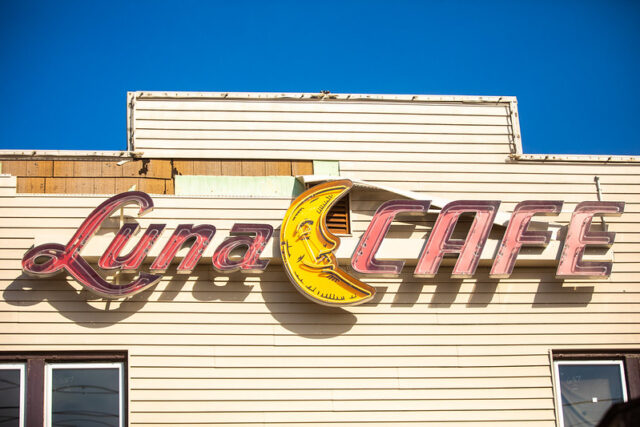When you think of Al Capone, you think of illegal speakeasies, violent murders and tax evasion. What doesn’t come to mind are small-town cafés – but they should. As one of America’s most infamous mob leaders, Capone traveled throughout America, and one of the spots he stopped was the Luna Café, a small eatery located along Route 66.
As you’ll soon find out, its walls hid more than just food and non-alcoholic drinks…
Who was Al Capone?

Al Capone was arguably one of the most prolific gangsters to operate in the United States during the early-to-mid 20th century. He gained notoriety during Prohibition, during which he also became the boss of the Chicago Outfit, an infamous crime family. Throughout this era, he smuggled alcohol from Canada, into the US, and made a sizeable fortune as a result.
As with other organized crime organizations at the time, Capone and the Chicago Outfit had rivalries with various underworld figures, most notably the North Side Gang. Tensions culminated in the Saint Valentine’s Day Massacre in 1929, which saw the death of George “Bugs” Moran at the hands of four men believed to be associated with Capone.
Law enforcement’s efforts to imprison Capone were successful 1931, when he was convicted of tax evasion charges. Sentenced to 11 years in federal prison, he ultimately contracted neurosyphilis, which caused his health to rapidly deteriorate. While released after eight years, he was too sick to continue his crime dealings, and spent his remaining years at his Florida home with family.
Capone died of cardiac arrest on January 25, 1947, at the age of 47, just days after suffering a stroke.
Luna Café

Given how much time he spent in Illinois, it’s not surprising to learn that one of Al Capone’s favorite restaurants was located in the state. What’s more, it’s still operating, providing patrons with some much-needed meal after driving along what remains of the famous Route 66.
The Luna Café, in Mitchell, was built in 1924. While it may appear to be a regular eatery nowadays, its early years were filled with secretive and, sometimes, illicit activity – we’re talking about an illegal gambling establishment hidden away in the basement and nighttime “entertainment” provided by women of the night. When the sun went down, it also turned into an illegal speakeasy.
While the establishment may not have the grandeur of modern eateries (many consider it a “dive bar”), it’s still popular among locals and travelers alike who wish to immerse themselves in history. There’s always someone down to play a game of pool, and those wishing to keep to themselves can try their hand at the slot machines.
Al Capone and the Luna Café

Despite the Luna Café being out of the way for Capone when he was in Chicago, Illinois, he made sure to make regular trips down Route 66 to pay the establishment a visit. At first, it was to connect with the area’s mobsters, but, before long, it became one of his favorite haunts.
More from us: These Are the Most Haunted Castles From Around the World
Want to become a trivia master? Sign up for our Today In History newsletter!
According to local legend, Capone would frequent the gambling den in the basement (whether or not he took home any money or had to pony up is forgotten to history). To pay homage to his patronage, the café has pictures of the infamous mob boss plastered on its walls.
